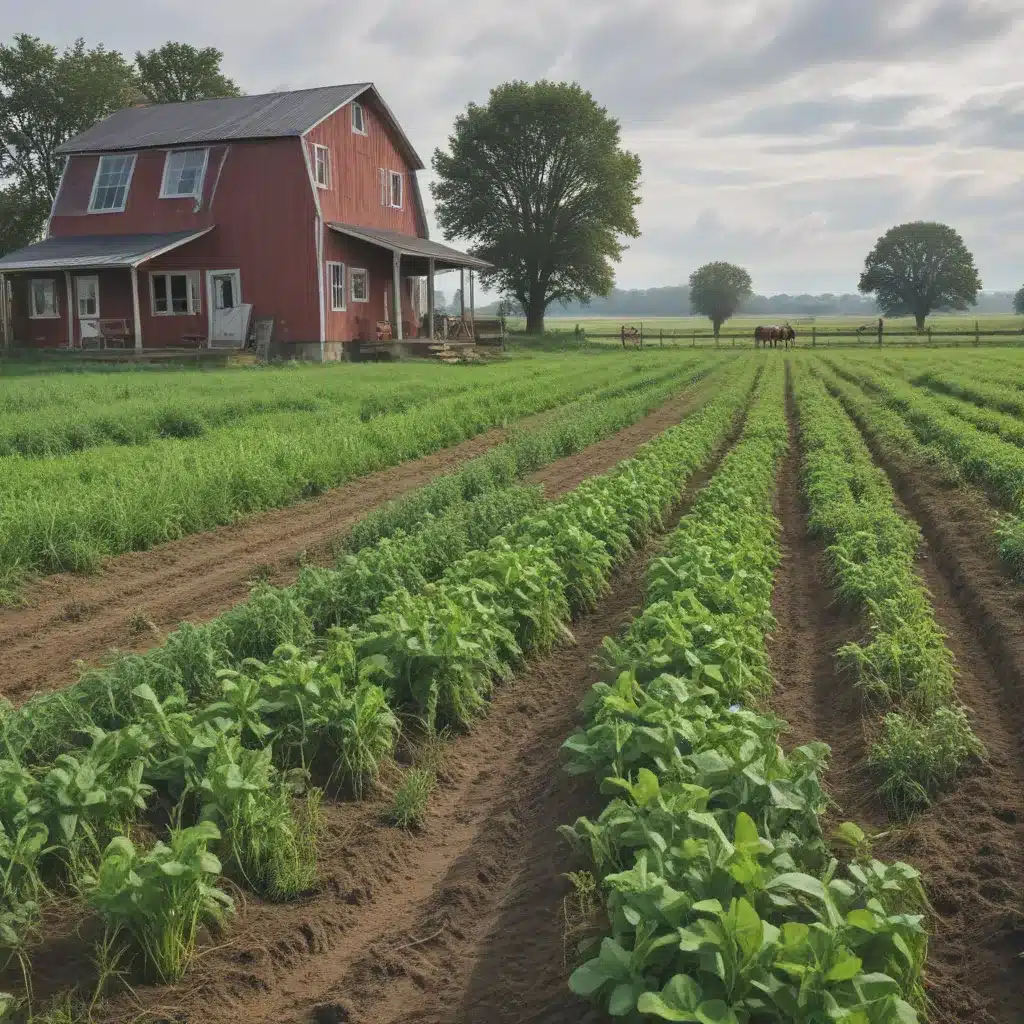
Weathering the Storm: Farming in an Age of Climate Change
As the clouds part and the sun peeks through, I take a deep breath of the crisp, country air – a far cry from the bustling streets of Brooklyn. Here on this lush, rolling expanse, I can almost forget the dire warnings about our warming planet. But make no mistake, the farmers who tend these fields are on the frontlines of climate change, adapting their practices to withstand the extreme weather, unpredictable seasons, and shifting climate patterns that threaten their livelihoods.
According to the New York State Department of Agriculture and Markets, the goal of the Climate Resilient Farming (CRF) program is to “reduce the impact of agriculture on climate change mitigation and to increase the resiliency of New York State farms in the face of a changing climate.” It’s a tall order, but as I chat with the owners of this Georgian Coffee House-affiliated farm, I see the determination in their eyes. They’re in it for the long haul, committed to preserving these fertile lands for generations to come.
Adapting to a Changing Climate
“It used to be so predictable, you know?” sighs farmer Sarah, wiping the sweat from her brow. “We’d plant our crops, tend to the fields, and know roughly when to expect the harvest. But nowadays, the weather is all over the place. One year it’s a drought, the next it’s flooding.” She shakes her head, her weathered hands gripping the worn wooden handle of her pitchfork. “We’ve had to get real creative to stay afloat.”
One of the ways this farm has boosted its climate resilience is by implementing Track 2 Adaptation and Resiliency measures from the CRF program. This includes upgrading their irrigation systems to be more water-efficient, trialing drought-resistant crop varieties, and diversifying their product offerings to hedge against the unpredictability of any single commodity.
“It’s all about building that adaptability into our operations,” chimes in farmer Tom, Sarah’s husband. “We can’t just cross our fingers and hope the weather cooperates anymore. We’ve had to get proactive – testing new techniques, investing in infrastructure, and always keeping an eye on the forecasts.”
Healthy Soils, Healthy Harvests
But it’s not just about weathering the storms, literal or figurative. According to the GIIN, building climate resilience in agriculture also means nurturing the land itself – the very foundation upon which their livelihood depends. That’s why this farm has wholeheartedly embraced Track 3 of the CRF program, focused on Healthy Soils NY.
“The health of our soil is absolutely critical,” Tom emphasizes, gesturing to the dark, fertile earth beneath our feet. “We’ve implemented all sorts of best management practices – reduced tillage, cover cropping, adding organic amendments. It’s about building that carbon content and nutrient density so our crops can thrive, even in the face of drought or extreme weather.”
Sarah nods in agreement. “And it’s not just about productivity, either. Healthy soils are better at sequestering carbon, which helps mitigate our farm’s overall environmental impact. It’s a win-win – for us, for our customers, and for the planet.”
Livestock and Landfills
Of course, the farm’s sustainability efforts don’t stop at the soil. They’ve also tackled the thorny issue of livestock waste management, which accounts for roughly 15% of agriculture’s greenhouse gas emissions in New York.
“We used to just have these open-air lagoons for our manure,” Tom explains, shaking his head. “Total methane factories, you know? But now, we’ve installed these state-of-the-art covered storage systems that capture that gas and let us use it to generate renewable energy.”
He grins proudly. “We’re not just reducing our emissions – we’re actually turning waste into a valuable resource. It’s all part of this holistic approach to climate-smart farming.”
Investing in the Future
Of course, implementing all these climate-resilient practices isn’t cheap. But the farm has found creative ways to fund their sustainability initiatives, tapping into the CRF program’s cost-share opportunities as well as exploring alternative financing models.
“We’ve worked with organizations like the GIIN to access impact investment capital,” Sarah explains. “They understand that building climate resilience isn’t just about reducing our environmental footprint – it’s also about securing the long-term viability of our farm. And that’s an investment worth making.”
As we wrap up our tour, I can’t help but feel a sense of cautious optimism. Yes, the challenges posed by climate change are daunting. But seeing the innovative, proactive approaches of this farm, I’m reminded that there are glimmers of hope. With the right mindset, the right tools, and the right partners, farmers can weather the storm and cultivate a more resilient, sustainable future.
And who knows? Maybe one day, visitors to the Georgian Coffee House will be able to enjoy the fruits of this farm’s labor – every cup of coffee or slice of pie a testament to the power of climate-smart agriculture.



















